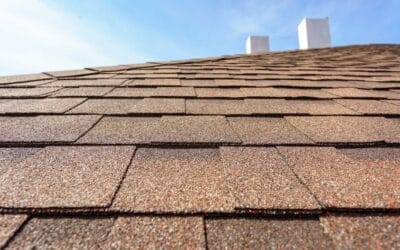Safety is not an accident. This guide is focused on sharing best practices for property managers ahead of roofing projects on multifamily tenant properties. Unlike other ongoing maintenance or construction, roofing projects are very infrequent – meaning that many managers have never had to go through one. Additionally, the nature of overhead work requires additional safety planning.
Overhead work on tenant properties during roofing projects requires careful planning and execution to ensure the safety of residents, their pets, and property. This comprehensive guide is structured to provide apartment building managers with the necessary information and steps to safeguard people, pets, and property during such projects.
This guide is organized into the following sections:
-
- Preparation and Planning
- Contractor Selection and Requirements
- Site Controls
- Safety Equipment
- Cleanup
- Incident Response Plan
People, Pets, and Property
Particularly when overhead work is performed on an occupied building, the “why” of safety planning is obvious: safety of the tenants, pets, and the property. There’s no excuse for creating an unsafe work environment when technology has made working overhead so much safer than in the past.
Preparation and Planning
Part of the pre-planning involves worksite safety. The best contractors use every tool at their disposal to clearly define work zones, traffic pattern changes, parking assignments, and other details. Great roofing contractors will also provide a schedule, which we call a ‘building flow’ of the site plan before they begin work. They will convey the schedule to the property manager, so the manager can communicate with the affected tenants.
In most instances, these pros will alert the property manager to possible concerns, like a pet playing on a balcony, or a houseplant that might be in the way. This allows the manager to alert the tenants ahead of time, and ask them to keep their pets inside, or remove any obstacles.
This may include attending tenant meetings to answer questions, address parking concerns, and make introductions of key personnel. All of these actions tend to improve tenant communications, while managing the risk of the project.
- Assess the Scope of Work: Begin by thoroughly evaluating the scope of the roofing project, including the number of buildings involved and the expected duration of work.
- Establish a Project Timeline: Develop a detailed project timeline that includes start and completion dates for each building to ensure efficient progress.
- Hire a Qualified Roofing Contractor: Select a reputable roofing contractor with a strong safety record, appropriate licensing, and insurance coverage.
- Develop an Incident Response Plan: As the property manager, create a comprehensive incident response plan that outlines procedures for addressing emergencies, accidents, and unexpected situations. Reputable roofing companies will have a quick response plan already in place as well. The onsite project manager, as well as the crew, will have received training for how to respond to an emergency in a professional way, instead of panicking and making a small problem into a large one.
Contractor Selection and Requirements
One of the most important jobs of a property manager is to provide a safe living environment for their tenants. They must also work to limit the disruption to the home lives of the residents when repairs are needed. Doing so requires working with a company that cares as much about safety as you do.
- Respect and Courtesy: If you select a multi-family roofing contractor widely respected in the area, you can rest assured everyone on the project will act professionally. Generally, the technicians on site will limit communication with the tenants, but they will be completely respectful when they do.
- Contractor Qualifications: Ensure that the selected roofing contractor meets all legal and safety requirements, including licenses, insurance, and adherence to local building codes.
- Safety Training: Verify that the contractor’s crew is adequately trained in safety protocols and equipped with the necessary safety gear.
The multi-family contractors often want to become a trusted part of the community, so they make every effort to avoid impugning their reputation. Great contractors are prepared for the job at hand. You won’t have to ask for insurance information, photos of past work, or a license number. All of that will be proudly provided to you, along with a detailed estimate of the work required.
A reputable multi-family contractor won’t dodge your questions. If you have a specific concern, they’ll spend time with you and make sure you understand every element of the project. A qualified multi-family roofing estimator will be happy to make an inspection and provide recommendations.
Rhoden Roofing has over 15 years of experience installing multi-family roofing projects safely and effectively. The pros at Rhoden Roofing can answer your questions, provide samples, and provide a level of trust you can depend on. If your property is located in the lower Midwest: Kansas, Oklahoma, Missouri, or Arkansas, our team offers free inspections and estimates to get the conversation started.
Tenant Communication
Tenant communication is so critical to ensuring a project goes smoothly and safely that we have published a separate guide to cover the topic in great detail. Compiled from lists of best practices of our own project managers over the years, we share Tenant Communication Tips Ahead of and During Multifamily Roofing Projects in its own article.
With clear communication, reminders, and proper planning, most issues with pets and residents can be avoided. A quality contractor will be able to guide the property manager/owner with recommendations for timely communications to tenant, like reminding the tenants to park their cars in a safe place before they leave for vacation.
Simple signage and reminders are a big step towards keeping avoidable problems to a minimum. If you encounter a roofing contractor that seems ambivalent to the details, you’ll often find they extend that attitude towards their work as well.
Site Controls – Clear Signage, Notices, and Directional Cones
- Advance Communication: Best practices for respecting tenants time and daily patterns is to give you as much advance notice as possible. This provides more time to communicate the new events with tenants, helping keep confusion to a minimum.
- Define Work Zones: Clearly define work zones with visible barriers, such as caution tape and signage, to restrict access to potentially hazardous areas. Signage will be placed around pet areas if equipment will infringe on the area. Safety-minded contractors will pre-plan these changes in advance. This helps tenants keep curious pets (and their owners) away from construction dangers.
- Traffic Control: Implement traffic control measures to ensure the safety of pedestrians and vehicles in the vicinity of the construction site. These zones change as the project moves forward, so it’s important to educate tenants to look for consistent signage, notices, and safety cones.
- Parking Management: Plan for alternative parking arrangements during the project to minimize disruptions and ensure the safety of tenants and their vehicles.
- Pedestrian Walkways and Building Entries: Emphasize the importance of keeping walkways to and from residents’ front doors clean and clear. Stress this point with the crew and on-site production managers. Where individual entrances must remain active during overhead work, these need to be protected by overhead barriers or scaffolding in case of falling debris.
Safety Tools and Equipment
Large Tools and Equipment on Site
Look for a stand-out contractor that uses safety tools the other companies don’t use. If you see large machines safely transporting debris from a multi-story roof. Multi-building properties are a distinct market from residential single-family roofing. One of the main differences that should help indicate whether a prospective contractor actually has experience in tenant properties is equipment. The cheapest (and least safe) option for tear-off is to simply pitch debris off the roof and hope for the best. This attitude may work in the controlled context of a single-family home, but is unacceptable at tenant properties.
When it comes to multifamily or multi-building roofing projects, large equipment is one of the simplest ways to evaluate the expertise and investments of a prospective contractor and determine if they are qualified to work safely in a tenant-occupied space. We have published a guide to help property managers ask informed and detailed questions on Equipment Used During Multifamily Roofing Projects.
Personal Safety Gear
Confirm that the roofing contractor provides and uses appropriate safety equipment, including fall protection gear, safety nets, and personal protective equipment (PPE).
If you drive by a construction site and notice everyone wearing safety gear, like hard hats, reflective vests, boots, and harnesses, you can bet the company takes safety seriously. Avoid contractors that cut simple corners, as these are just accidents waiting to happen.
Conscientious contractors protect their technicians too. Falling objects are always a danger when working over an occupied space, so the best roofing contractors ensure they understand and follow OSHA guidelines anytime work is being performed.
Cleanliness and Cleanup
Safety includes more than falling debris. Clean worksites are especially important in roofing because of plastic-cap roofing nails, which have a wide plastic washer to hold underlayment in place, but which also allows those nails to sit facing upright on the ground of allowed to. These are a hazard for feet and tires.
Rolling a magnet around your yard will be neat and keep the impact to a minimum. Ask many questions about cleanliness standards of a prospective contractor: keeping a jobsite clean is cheap and anyone can do it, so be weary of a contractor who is willing to cut corners on this, as there may be harder, less-obvious compromises happening on the job as well.
Incident Response Plan
- Emergency Contact Information:– Maintain a list of emergency contacts, including local authorities, medical facilities, and the roofing contractor’s contact information.
- Reporting Procedures: – Establish clear procedures for reporting accidents, incidents, or safety concerns to the appropriate authorities and management.
- Employee Training: – Train on-site staff and contractors on the incident response plan to ensure a coordinated and efficient response to emergencies.
Conclusion: People, Pet, and Property Safety
By following the steps outlined in this guide, apartment building managers can effectively prepare for and manage overhead work on tenant properties, prioritizing the safety and well-being of residents, their pets, and property throughout the roofing project. Remember that clear communication, adherence to safety protocols, and proactive planning are key to a successful and incident-free project.
This article is part of our Multifamily Roofing Comprehensive Planning Guide. Learn more about:
- Ensuring Smooth Projects
- Know Before You Start
- Common Challenge Areas
- Related Education



